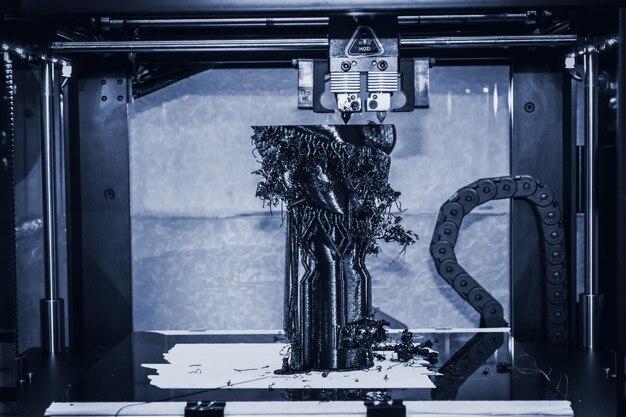The year is 2023, and as we tap away on our keyboards, print media may seem like a relic of the past. However, it’s essential to remember the profound impact of the printing revolution that shaped the world we live in today. The printing revolution, which occurred during the fifteenth century, not only revolutionized the way information was disseminated but also transformed societies, culture, and politics in ways that continue to resonate.
In this blog post, we’ll explore three significant effects of the printing revolution and delve into its influence on events like the French Revolution. We’ll also investigate the factors that facilitated the rise of print culture in Europe and its transatlantic reach. So, let’s embark on a journey through time to understand the profound implications of this technological advancement on our modern world!

What Were Three Effects of the Printing Revolution?
The printing revolution, also known as the Gutenberg Revolution (not to be confused with another revolution where people turned into robots), brought about significant changes in the world. Let’s dive into three exciting effects of this groundbreaking development.
The Written Word Spread Like Wildfire
Before the printing revolution, getting your hands on a book was no easy feat. Mostly made by legions of monks, books were considered a luxury, available only to the elites. But with Johannes Gutenberg’s printing press, books became more accessible than a cup of drive-thru coffee. Suddenly, knowledge was out in the open, spreading like wildfire (or rumors on social media). People hungry for knowledge devoured books faster than a kid who just discovered the existence of unlimited candy. With knowledge more accessible, people began to question the world around them, leading to new ideas, discoveries, and maybe even the occasional heated debate over whether pineapples belong on pizza.
The Rise of Literacy and Education
Thanks to the printing revolution, reading and writing became cool, replacing sword fighting as the new trend among the literate. As books became more abundant and affordable, the thirst for knowledge grew stronger than a Kardashian craving for Instagram likes. People from all walks of life, from the noblest of nobles to the cheekiest of chimney sweeps, could now learn to read and write. This led to a significant increase in literacy rates, empowering individuals to express their thoughts, dreams, and perhaps even bad poetry in writing. Education flourished, and minds became sharper than a freshly manufactured pencil. As a result, people finally realized that “ur” is not a word, and proper grammar became the golden ticket to intellectual conversations.
The Birth of Mass Communication
Move over, town criers! The printing revolution sparked the dawn of mass communication. Newspapers appeared on the scene, packed with juicy stories and the occasional horoscope predicting a sudden encounter with an attractive stranger. Suddenly, news traveled faster than a cheetah in rocket-powered roller skates. Events, ideas, and opinions could now reach a wider audience, causing reactions and discussions that made tavern debates seem as quiet as a library. The printing revolution turned the average Joe into an informed citizen, shaping public opinion and fostering the birth of democracy. From protest pamphlets to scandalous tabloids, the printing press became a catalyst for change, ensuring that no news was ever too scandalous or too scandalous to print.
So, there you have it! The printing revolution didn’t just make typesetting cool; it reshaped society, spreading knowledge, boosting literacy, and creating a new era of mass communication. As we embrace the benefits of modern printing techniques in the digital age, let’s always appreciate the impact of Gutenberg’s invention and raise a toast to the power of words, written and printed. Cheers!
Disclaimer: No printers were harmed in the making of this blog. Any similarities to actual revolutions, either printing-related or otherwise, are purely coincidental.

FAQ: Effects of the Printing Revolution
How did the print revolution affect the American colonies
The print revolution had a profound impact on the American colonies. It allowed for the dissemination of ideas and information at a much faster rate than ever before. Colonial newspapers played a crucial role in shaping public opinion, fueling the flames of rebellion against British rule, and rallying support for the American Revolution.
What was the impact of the print revolution
The impact of the print revolution was far-reaching. It democratized knowledge by making books and printed materials more accessible to the masses. It fostered intellectual exchange, spurring the Enlightenment and the questioning of traditional authority. It also facilitated the spread of scientific discoveries and advancements, paving the way for societal progress.
What is the meaning of print culture
Print culture refers to the collective practices, beliefs, and values associated with the production, distribution, and consumption of printed materials within a society. It encompasses everything from the widespread availability of books and newspapers to the development of literary and intellectual movements.
What were the factors that helped the rise of print culture in Europe
Several factors played a role in the rise of print culture in Europe. The invention of the printing press by Johannes Gutenberg in the 15th century revolutionized the reproduction of texts. Additionally, the increasing literacy rates and the patronage of wealthy individuals and institutions helped fuel the demand for printed materials.
What were three effects of the printing revolution
-
Spread of Knowledge: The printing revolution enabled the mass production and distribution of books, significantly widening access to knowledge. This led to increased literacy rates and the democratization of education.
-
Cultural Transformation: The availability of printed materials sparked cultural transformations, such as the rise of the Renaissance and the Reformation. New ideas and philosophies spread rapidly, challenging established norms and shaping the course of history.
-
Impact on Societal Power Structures: The printing revolution undermined the monopoly of knowledge held by the elite. It empowered individuals and marginalized voices, allowing for the dissemination of dissenting opinions and fostering the development of democratic ideals.
What is transatlantic print culture
Transatlantic print culture refers to the circulation of printed materials across the Atlantic Ocean between Europe and the American colonies. It facilitated the exchange of ideas, news, and literature, contributing to the development of a shared Anglo-American cultural identity.
Who brought printing to Europe
Printing was brought to Europe by Johannes Gutenberg, a German inventor, in the mid-15th century. Gutenberg’s invention of movable type revolutionized the process of book production, marking the beginning of the printing revolution.
What was print revolution and what was its impact
The print revolution refers to the transformative impact of the invention of the printing press on society, culture, and knowledge dissemination. Its impact was enormous, revolutionizing education, fostering cultural and intellectual movements, and ultimately shaping the course of history.
Who was Marco Polo? What did the Italian learn from him regarding printing
Marco Polo was an Italian merchant and explorer who traveled extensively across Asia during the 13th century. While he did not specifically mention printing in his accounts, his travels introduced Europeans to various advancements and practices of Asian civilizations, including papermaking and block printing techniques, which later influenced the development of printing in Europe.
Why was print culture introduced in China
Print culture was introduced in China to meet the growing demand for books and educational materials. As a highly literate society, China recognized the value of widespread access to knowledge. The development of printing techniques, such as woodblock printing, allowed for the efficient reproduction of texts, enabling the dissemination of information on a larger scale.
What was the impact of print culture
The impact of print culture was transformative. It revolutionized education, allowing for the mass distribution of books and the dissemination of knowledge. It facilitated the exchange of ideas, leading to intellectual and cultural movements. It also played a crucial role in the dissemination of news and information, shaping public opinion and influencing societal developments.
When did print culture emerge
Print culture emerged with the invention of the printing press by Johannes Gutenberg in the mid-15th century. This marked a significant shift in the way information was produced, distributed, and consumed, laying the foundation for the print revolution.
How did print come to Europe from China
The technique of block printing was first developed in China during the Tang Dynasty (618-907 CE). It eventually spread to other parts of East Asia, including Korea and Japan. Marco Polo’s travels in the 13th century exposed Europeans to these printing techniques, which were later adapted and refined by Johannes Gutenberg in his invention of the movable type printing press.
Who among the following were scared of print
One of the figures who expressed fear of print was King Louis XI of France. He believed that the spreading availability of printed materials would erode his power and undermine societal stability. However, it is worth noting that King Louis XI’s fear and opposition to printing were not universally shared.
Who was Marco Polo? What was his contribution
Marco Polo was an Italian explorer and merchant who embarked on a journey to Asia during the 13th century. His accounts, recorded in the book “The Travels of Marco Polo,” introduced Europeans to the wonders and advancements of Asian civilizations, including papermaking, block printing, and other cultural practices. His contribution was significant in broadening Europe’s knowledge of the world beyond its borders.
Satisfied that your curiosity has been piqued? Well, the printing revolution unleashed knowledge’s true powers, changing the course of history, and setting the stage for intellectual revolutions. So, grab a book, be grateful for the printing press, and let the ink of knowledge leave its indelible mark on your mind.
